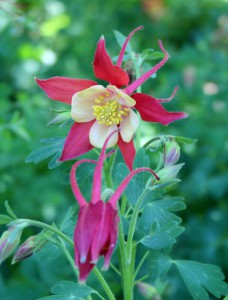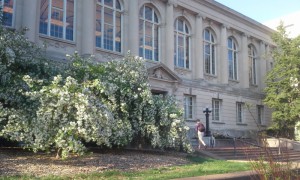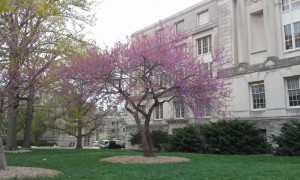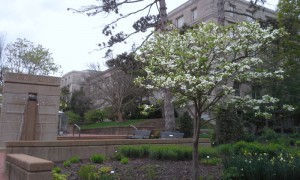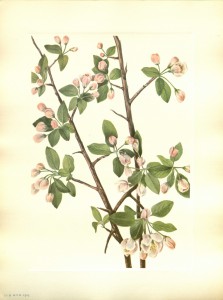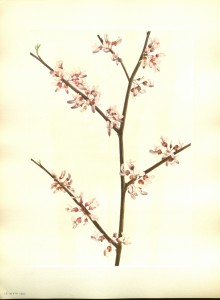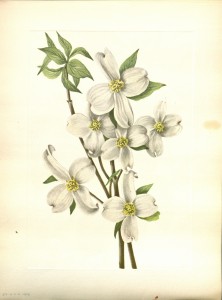It's been unseasonably chilly here in Columbia this week, but that means the irises blooming all over town have been an even more welcome sight. There's a beautiful planting of Iris pallida 'Argentea Variegata' near the west entrance to the library, and I captured it on my walk into the building this morning. There are many different species of iris growing across the northern hemisphere. According to the Missouri Botanical Garden, Iris pallida is native to Croatia and the southern Alps, and it has a sweet fragrance. The variegated subspecies growing on campus here has striped leaves of pale green and cream.
In 1542, the physician and botanist Leonhart Fuchs included a different iris species in his herbal, De Historia Stirpium Commentarii Insignes, which is part of a long tradition of books that describe plants and their medicinal uses. Although Fuchs wasn't interested in the plants' ornamental value, he hired three professional artists to illustrate the herbal to the highest degree of naturalism. Fuchs wanted physicians to be able to use the book to identify medicinal plants, and the resulting publication is filled with detailed, hand-colored illustrations that depict species both familiar and exotic. Iris germanica, illustrated below, is probably native to southern Europe, and it is the ancestor of most garden irises today.

